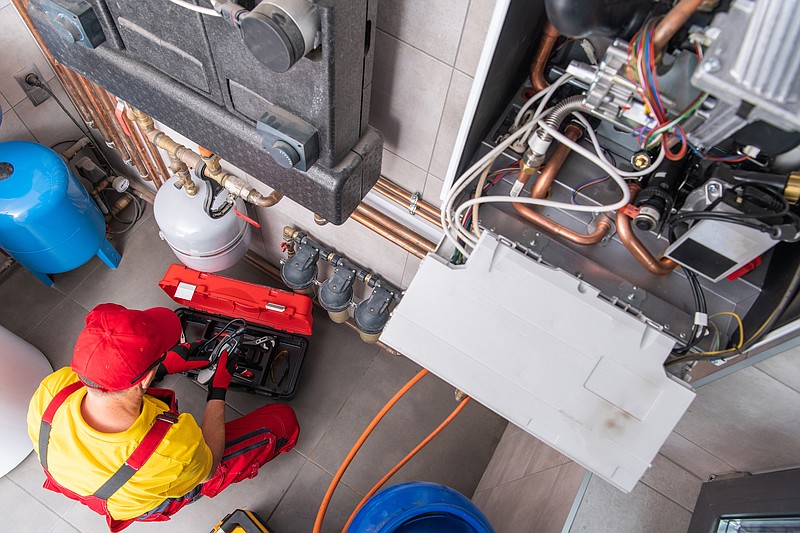If you've ever had a significant problem with your gas-powered HVAC system, you've probably heard the term "red-tagged." (And if you haven't yet, there's every chance you will someday, given that most HVAC systems have a lifespan of 10-20 years.) Whatever the circumstances, red-tagging means that you need to prioritize repairs immediately.
A red tag may be placed by an HVAC tech or a worker for the utility company. This means a gas-powered appliance cannot be safely operated until a situation is resolved. Furnaces, stoves, water heaters and gas dryers are all subject to being red-tagged.
Different states and utility companies have their own regulations about how red-tagging works, so if you get one, it's a good idea to read up on your local laws. In some cases, only utility company workers can issue a red tag.
Numerous problems can lead to a red tag. Some of the most common are carbon monoxide leaks, gas leaks, and fire hazards. Many times, a cracked heat exchanger is the culprit. Such cracks can allow gas or carbon monoxide or both to flow into the living area, which is extremely dangerous.
Most of the time, red tags will follow one of two types:
• Type A red tags mean the situation presents immediate danger, such as some kind of gas leak. The technician will shut down your gas immediately until the issue can be fixed.
• Type B tags indicate a serious problem with no immediate danger. In these cases, you should get the issue repaired as soon as possible, but the gas can still be running in the meantime. In some cases, it might be applied by a utility inspector who will require you to resolve the problem in a certain amount of time.
Repair costs for red-tagged furnaces can vary greatly. It could be anything from a poorly sealed line to a broken central unit. Your HVAC pro should be able to provide a detailed explanation of the problem and a written estimate for the work that will need to be done. A cracked heat exchanger will usually cost around $1,500 to repair.
If your older furnace has been red-tagged with a major issue, it may be a better idea to replace it entirely rather than repair. A furnace older than 15 years probably needs to be replaced rather than repaired; even if you've kept it in pristine condition and maintenance, it won't have many years left in it. A new furnace will cost $2,000-$6,000 on average, depending on the size of your house and type of furnace. Make sure you ask the cost of potential replacement when planning a major repair.
If you're worried that the red-tagging may have taken place in error, hire another reliable HVAC company for a second opinion.

